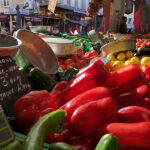Visit Verdun, Metz, Champagne, battlefields and memorials with France’s Western Front WWI Sites Travel Itinerary from PBS host Darley Newman.
This itinerary takes travelers to significant WWI sites located throughout Northeastern France along the historic Western Front to learn about the history of The Great War. Many of the sites I’m highlighting are of special importance to Americans like Verdun, Compiegne, Aisne-Marne American Cemetery and more.
We followed the below itinerary to film two half hour episodes on “France’s Western Front,” broadcasting now on PBS and Amazon Prime. While we visited battlefields, memorial sites and museums, we also visited great Champagne cellars, lively markets, took a cooking class, and walked historic cities—all things you may want to experience as you delve into history and culture in Northeastern France.
Background on France’s Western Front and the Centenary of WWI
From August 1914 until November of 1918 Northeastern France was a war zone and though today travelers may find small villages, pretty countryside and great cuisine, the scars of the past are visible in the form of destroyed villages, large memorial sites, and through the local people, who continue to commemorate The Great War. We timed our travels and filming for our PBS episodes along the Western Front with the Centenary of WWI, which started in 2014 with commemorations of the outbreak of the war and will continue until 2018.
Day 1- Compiegne and the Armistice Memorial Museum at Rethondes
Most flights arrive to Paris in the morning. We flew Air France and then rented a vehicle for our crew and equipment and traveled to the Oise area. While we liked the freedom of driving, one might also take the train to many sites listed in this itinerary and could also consider combining the train with hiring private guides.
Our first stop was lovely Compiegne, just a 90-minute drive from Pairs and a spot where café culture reigns supreme. I was lucky on my visit to find an ice cream truck in the town square serving ice cream topped with Chantilly Cream, a traditional French cream that hails from this region.

Compiegne is a nice place to relax in the midday sun and pay tribute to Joan of Arc, who hid out in the nearby Compiegne woods before her capture in 1430. You’ll find a statue dedicated to Joan of Arc in the main square. Consider having lunch in Compiègne at charming and award-winning L’endroit.
Compiegne’s nearby woods would be the site of important diplomatic events centuries later and today are home to the Armistice Memorial Museum at Rethondes where on November 11th, 1918 the Germans signed the Armistice to end the war. The site has memorials where you can pay tribute to the tens of millions of men who fought in WWI, one of the deadliest conflicts in human history.
Step inside the Armistice Memorial Museum at Rethondes, where you’ll find a replica of the original train car where Marshal Foch met with the Germans to sign the Armistice to end World War I. This same railroad car would be significant during the Second World War, when Hitler ordered that it be returned to the same location, forcing the French to sign their surrender to the Nazis on June 22, 1940.
Spend the next few nights at Hôtel du Golf de l’Ailette in Chamouille. Enjoy dinner at the hotel, which overlooks a pond, where you may find swans gliding about.
Day 2- Château de Blérancourt, Belleau Wood, Aisne-Marne American Cemetery & Champagne
Today focuses on The Great War through the eyes of an American woman who for more than eight years worked to help rebuild Northern France at Château de Blérancourt. The daughter of wealthy American financier J.P. Morgan, Anne Morgan founded the American Committee for Devastated France, a group of 350 American women volunteers who delivered medical and social services, based at Château de Blérancourt, a 17th century chateau approximately 40 miles form the front lines. At a time when most women in France and America didn’t even have driver’s licenses, Anne Morgan drove supplies through combat zones.
Château of Blérancourt is an elegant seventeenth-century château. It now houses a French national museum on Franco-American Cooperation with a unique collection highlighting the activities of Anne Morgan’s American Committee for Devastated France; the first American ‘fly boys’, the Lafayette Flying Corps; an exhibit on volunteer ambulance drivers, especially those of the American Field Service and more.
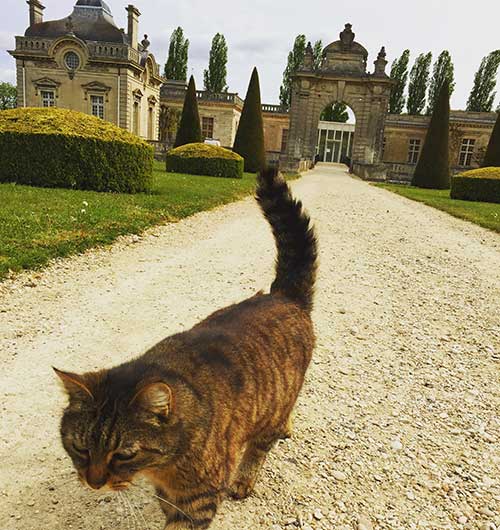
On site, enjoy lunch at The Hostellerie Le Griffon at Blérancourt, which has a nice view of the chateau and good food. If you’d like something sweet after lunch, walk from the chateau into town to visit Artisan Boulanger to get a chocolate éclair and other tasty pastries.
This afternoon, visit Bois Belleau and Cote 204 monument. On the very spot where this cemetery was built, the Americans stopped Germans thrust during the summer of 1918. With over 2,000 graves and its commemorative chapel, Belleau Wood has been converted into a memorial dedicated to all Americans who fought there during the First World War. Today the wood itself remains a shrine, where some artillery weapons are a grim reminder of the violent fights which took place there.
Over the course of several weeks in June 1918, Americans, including those from the 4th Marine Brigade of the US Army’s Second Division, fought one of WWI’s most brutal battles, the Battle of Belleau Wood. It would result in over 8000 American casualties with many of those American men who fought at Belleau Wood and in the vicinity buried today at the Aisne-Marne American Cemetery. The cemetery contains the headstones of soldiers, sailors, marines, aviators, who died not only during these battles but from June 1918 all the way to the end of the war.
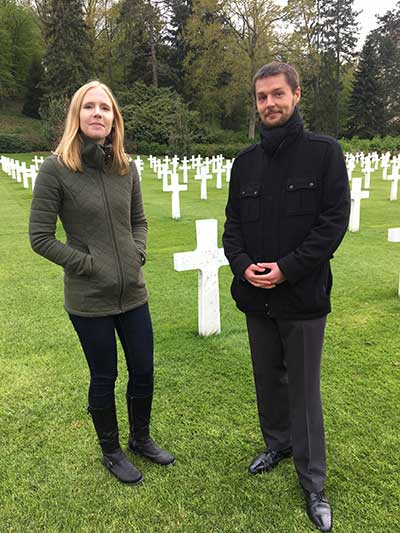
Just down the road, the majestic Château-Thierry American Monument overlooks the Marne valley. It honors he American soldiers who fought in the region. It’s also en route to Chateau-Thierry, our next stop.
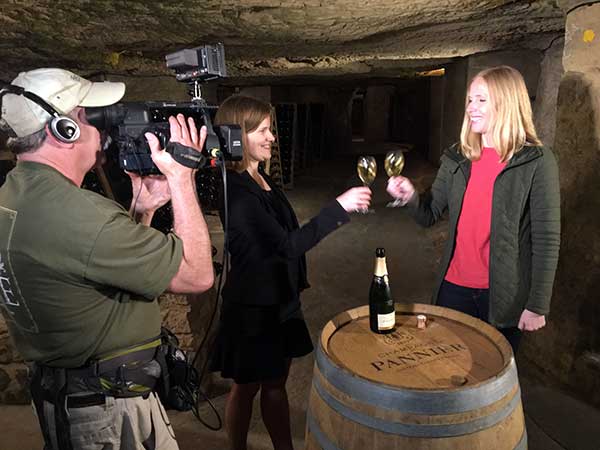
Mix history with Champagne this afternoon at Champagne Pannier’s cellars at Château-Thierry. Within these medieval cellars in the heart of the Marne Valley vineyard, solders and local residents hid out during the war. The historic Champagne region has been the site of many battles over the centuries, including during the First World War. Cellars like this one, which are a safe haven for Champagne today were once battle sites and hiding places, too.
Day 3- Caverne du Dragon, Chemin des Dames & Reims
Another scene of lengthy fighting is in Aisne along the Chemin des Dames, a strategic plateau where around 200 underground quarries would be used by soldiers during World War I. Along the Chemin des Dames, there are various gravesites, destroyed villages and quarries, like the Caverne du Dragon, which became army barracks during the Great War and the site of an epic underground battle in 1917 between French and German troops.. Travelers can take a guided tour, following in the footsteps of soldiers. The chapel, first aid station, command post and No Man’s Land movingly testify to the lives of these men – both French and German – who fought and lived, sometimes even side by side, in the obscurity of these underground spaces.
From the very first clashes right to the end of the war, the Chemin des Dames was a frontline position where violent fighting took place, particularly during the Nivelle Offensive on April 16, 1917. Along a trail of 18.6 miles, many sites will enable you to discover and understand the history of this significant area of remembrance. Two places that cannot be missed are the Plateau de Californie and the former village of Craonne.
Travel onwards to the Marne to historic Reims, less than an hour and a half drive. Enjoy lunch in Reims with a culinary workshop next to the Reims Cathedral at Au Piano des Chefs with Chef and Entrepreneur Eric Geoffroy.
Geoffroy’s emphasis is on creating memorable cooking experiences that are educational, interactive and fun, using seasonal and local produce and showcasing local and regional producers. Workshops can be tailored to individuals or small groups, private or corporate.
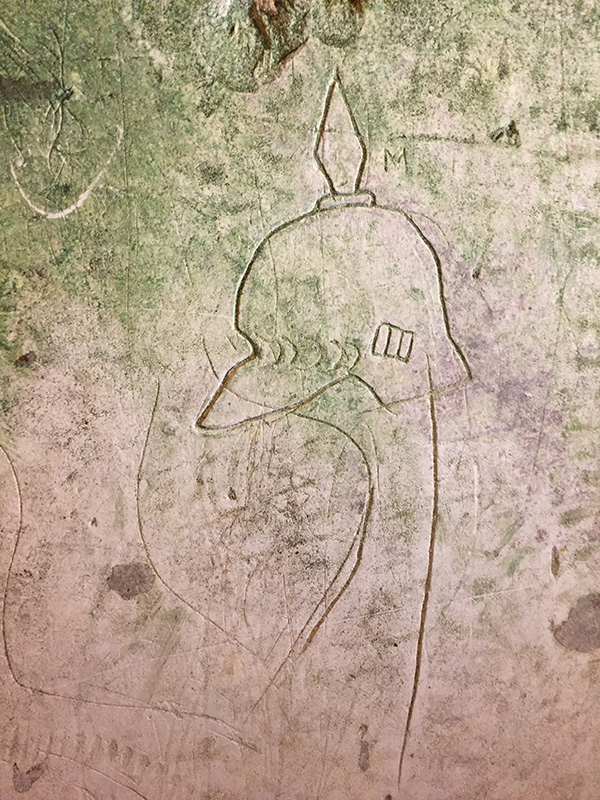
After your cooking adventure, enjoy a guided visit at the Taittinger House of Champagne. Taittinger has cellars dating back to the 4th century and over time these cellars played a role in profound events, including The Great War. Graffiti tells the story of the cellars use as a refuge for soldiers, children and more.


While in Reims, travelers must visit the Reims Cathedral. During The Great War, the front line was just outside of the city and much of Reims was destroyed by German shelling. The cathedral was not spared, being hit by hundreds of shells and at one point catching fire. The walls and buttresses survived, but the rest was devastated. Restoration work began in 1919 with hefty later donations from the Rockefeller Family. Today the cathedral welcomes travelers from around the world, who are greeted by the Cathedral’s Smiling Angel.
Spend tonight in Reims at Hôtel de la Paix in Reims, which is located right downtown. You can walk to tonight’s dinner location, L’Alambic. The atmosphere in L’Alambic in Reims is designed to look like Champagne cellars, making for a fun dining adventure.
Day 4- Champagne and Argonne
Visit ‘La Main de Massiges,’ the Hand of Massiges a high point where the Germans retreated in 1914. It’s here that the Champagne and Argonne fronts meet. Though the Champagne area of France has soil well suited for growing grapes for Champagne, this chalky soil, when dug out to build trenches, floods easily, making for impossible conditions. The trenches have been restored to appear as they would have in 1914 and 1915, when the majority of the fighting was going on in this strategic location near the Argonne front and the Champagne front. Walking through gives a further chilling sense of life on the front lines.
From here, it’s a scenic 45 minute drive to the Meuse area. Make a stop at one of the most interesting WWI related destinations on this itinerary, the Romagne 14-18 museum. Owner Jean-Paul de Vries’ started collecting WWI artifacts when he was just seven years old and has gone on to amass over 80,000 objects. This museum reveals what daily life was like for the average soldier through objects with their own personal story.
With its over 14,000 crosses, the Meuse-Argonne American Cemetery and Memorial is the largest American graveyard in Europe. The Sammies who fell during the battle to liberate the Meuse-Argonne area rest in peace here. Its layout and architecture make this an essential part of any tour aiming to show what Americans mean when they say, “We shall never forget”.
Soldiers from across the United States courageously fought and died in the Meuse-Argonne Offensive, like Erwin Bleckley from Kansas, who received the Congressional Medal of Honor for his service. The visit particularly hit home for me upon seeing the headstone of Freddie Stowers from my home state of South Carolina. The grandson of a slave who was drafted into the Army in 1917, Stowers was recommended for the Medal of Honor after his death. He wasn’t honored with it until decades later in 1991. Stowers is one of only two African American men to receive the medal of honor from WWI, though many more surely deserved it.
It’s not just the seemingly endless headstones that lay witness to the dead, the Memorial chapel, contains the names of servicemen and women who went missing from the area during the war, including those from the U.S. expedition to northern Russia. Rosettes mark the names of those since recovered and identified.
Also, consider visiting the American Monument at Montfaucon-d’Argonne. This monument was erected by the American Battle Monuments Commission (ABMC), a US government agency that also takes care of its maintenance. Visitors can climb to the observation platform (opening times are displayed outside) from where they can enjoy a magnificent view over almost all of the territory conquered during the Meuse-Argonne offensive.
Drive onwards, about 40 minutes, to Verdun and spend tonight at Les Jardins du Mess in Verdun, where we also recommend having dinner.
Day 5- Verdun
The Meuse is home to a wide range of unique local gastronomic pleasures. Verdun is the world capital of the “Dragée.” This delicate candy is a sugar coated almond was considered an aid to fertility and today, no self respecting wedding or baptism celebration would be without “dragées” on the table. A visit to the Braquier Dragée Factory in Verdun will hold many pleasant surprises. Braquier’s sweet dragees have been held in high regard through the centuries with past clients including the King of England, Prince of Wales and President Charles de Gaulle. Travelers can take a guided tour.
Enjoy lunch at Chez Mamie. If it’s on the menu when you visit, as the menu does change with the seasons, order the white asparagus and quiche Lorraine. The quiche Lorraine here is truly authentic, made without cheese. Yes, here in Lorraine, France the real deal is made with flour, butter, salt, eggs that are well whipped, double cream and bacon and it’s good.
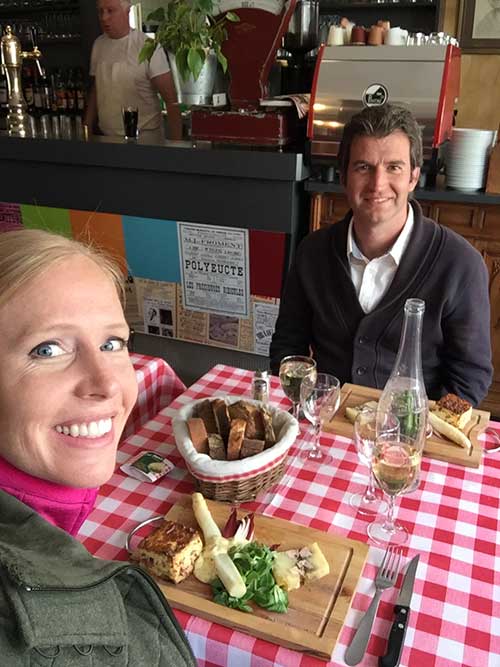
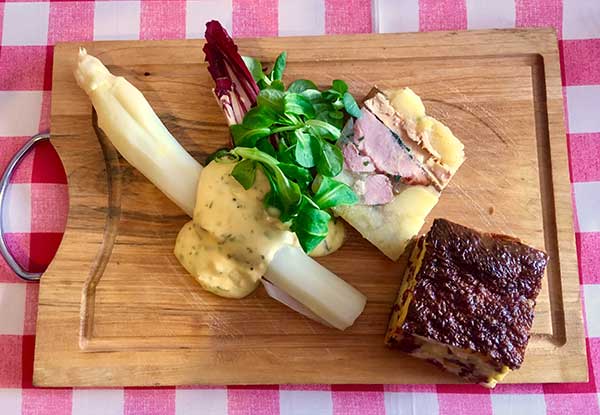
Definitely try quiche Lorraine in Lorraine. We had a wonderful meal including white asparagus at Chez Mamie in Verdun.
This afternoon, visit Verdun Battlefield. There are a variety of ways to explore. We chose to ride bikes, but you can also ride horses, walk or drive. Sites are some distance apart.
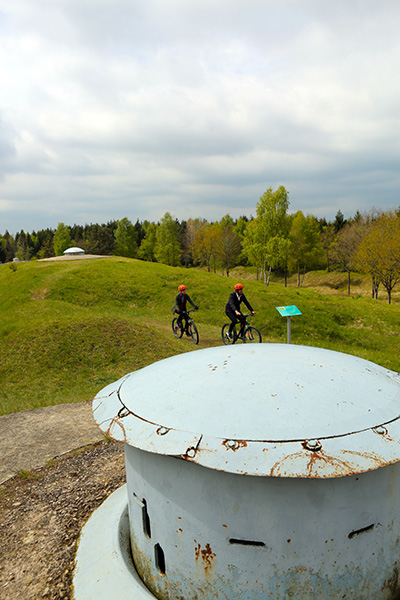
A visit to the Verdun Battlefield is an essential step in understanding the intensity of the fighting, the life of the solders and the artillery duel that marked the Great War. Verdun, the largest city in Meuse, was also the site of the longest battle of World War I, the Battle of Verdun.
300 days and 300 nights of unbroken fighting took place at Verdun. The Battle of Verdun in 1916 was the most deadly head-on clash between France and Germany in history. The struggle to totally destroy men and defenses by means of an unprecedented artillery battle symbolizes and summarizes industrial warfare.
Verdun’s cemetery lays heavy with visible gravesites, while the ossuary is home to the remains of 130,000 unknown soldiers. These are important to visit, but we also recommend Fort Douaumont, the largest fort built around the town. Travelers can go inside.
In the heart of the Battlefield, the Verdun Memorial, which first opened in 1967 under the patronage of French Academician and war veteran Maurice Genevoix, is one of the most important Great War museums in Europe. It is also one of the only museums built on the actual site of a battle.
Stay tonight at a French Chateau just south of Verdun. Chateau des Monthairons was used as a hospital for American troops and a base for ambulance sections during The Great War and during World War II was occupied by German troops. Today this historic chateaux is a pet friendly and regal place to stay. We recommend eating dinner here. Their cheese board is truly impressive!
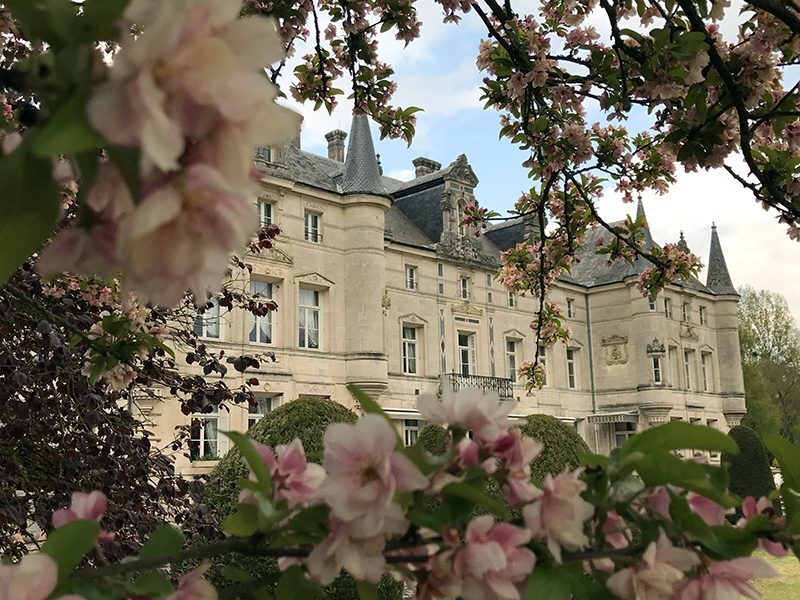
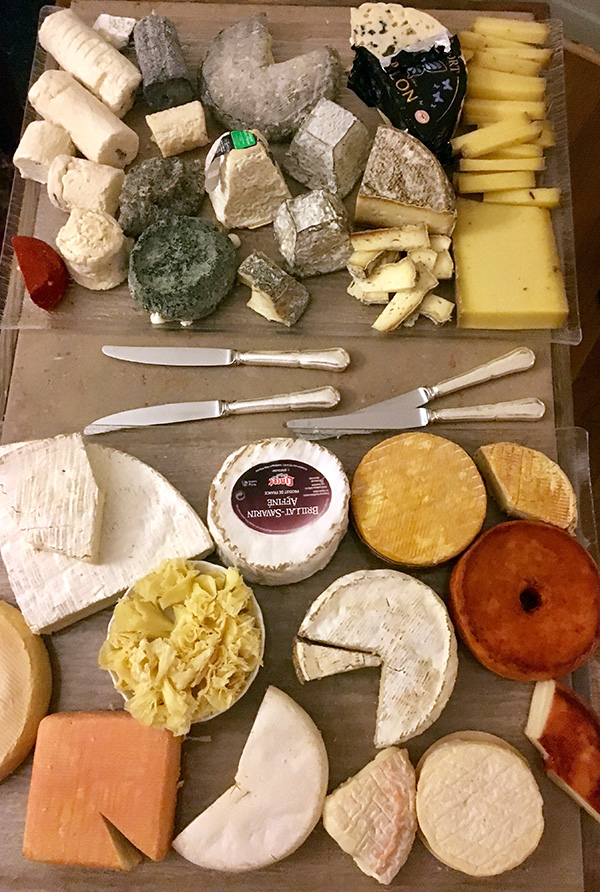
Day 6- Metz
Drive through the Meuse Hills to Metz, located just an hour from Luxembourg. A rural and peaceful route today, the effects of WWI are ever present. Villages have statues to commemorate the fallen soldiers, located in front of pretty town halls.

To stretch your legs, I recommend a stop in Saint Mihiel, the site of a landmark World War I battle, the Battle of Saint Mihiel. It was the first independent American offensive of the war and the single largest American military undertaking up to that point. In September 1918 half a million US troops and over 100,000 men from the French Army banded together to take back territory that had been under German control for four years. Surprising the Germans with a short artillery bombardment and then by navigating over barbed wire, thought to be impassible, the battle was won and the term D-Day was born with the Battle of Saint Mihiel.
Saint Mihiel today is worth a stop and if you do, make sure to visit a local pastry shop. We stopped at Rochers Et Croquets, which is divine. Macarons may help fuel the rest of your drive to Metz, where more good food and history await.

The history of Metz dates back over 3000 years and the various historical periods are reflected in the architecture, making walking around a treat. The mix of lively shopping streets and riverside walks makes Metz ideal for pedestrians and cyclists. Family-friendly parks and gardens abound. See the swans on the river Moselle or the eco-gardens along the river Seille, or just enjoy a stroll along the old ramparts from the Germans Gateway to the Cathedral. Metz, with its well preserved buildings, is a classed “City of Art and Heritage”.
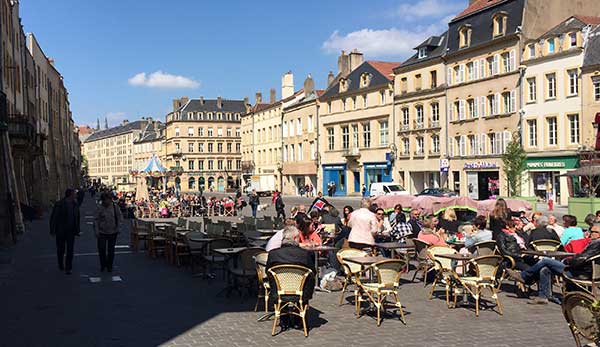
One of the oldest markets in France, the Metz Covered Market is located in the city center beside the historic Roman Catholic Cathedral. Like many buildings in Metz, the covered market has an interesting story. Inside, it’s a true adventure for food lovers.
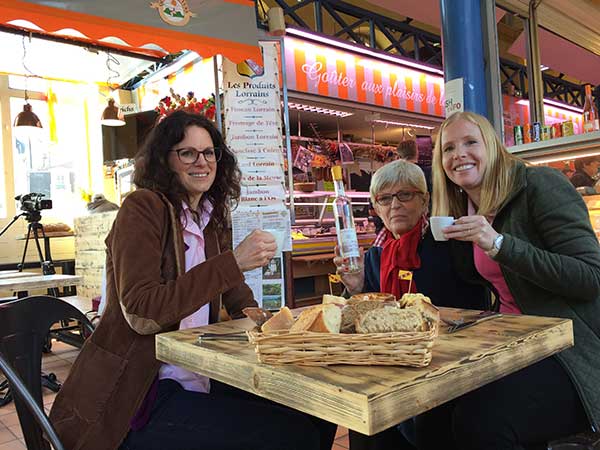
In the Metz Covered Market, stop by Chez Mauricette, for quiche Lorraine and Mirabelle plum liqueur.
Stay tonight at Hotel Restaurant Mercure Metz Centre, which is conveniently located within walking distance of the Covered Market and the rest of Metz and has a restaurant onsite.
The above itinerary may take you longer to complete yourself. You may like to spend more time at each. Please use this as an overall guide for things to see and do. For more information on visiting these areas, check out the websites for Oise Tourisme, Aisne Tourisme, Meuse Tourisme, Champagne Ardenne, Lorraine Tourisme and the France Tourism WWI Centennial site.
Interested in learning more? Check out a preview for the “Travels with Darley: France’s Western Front” episodes broadcasting now on PBS stations across the nation and watch these full episodes on Amazon Prime.



